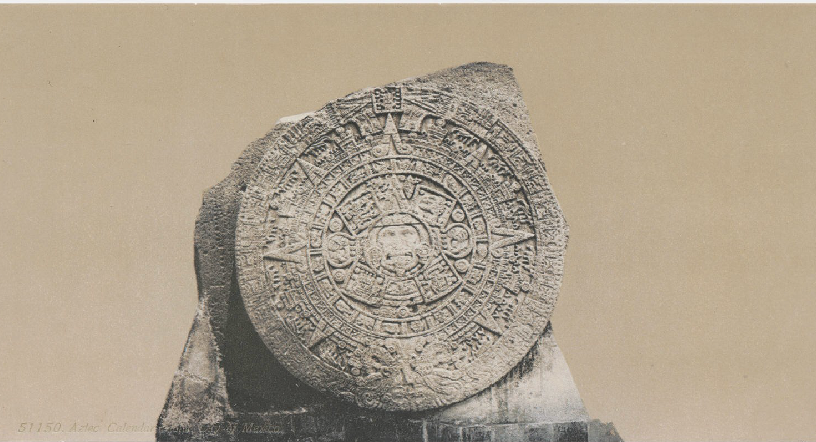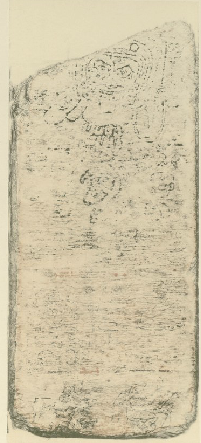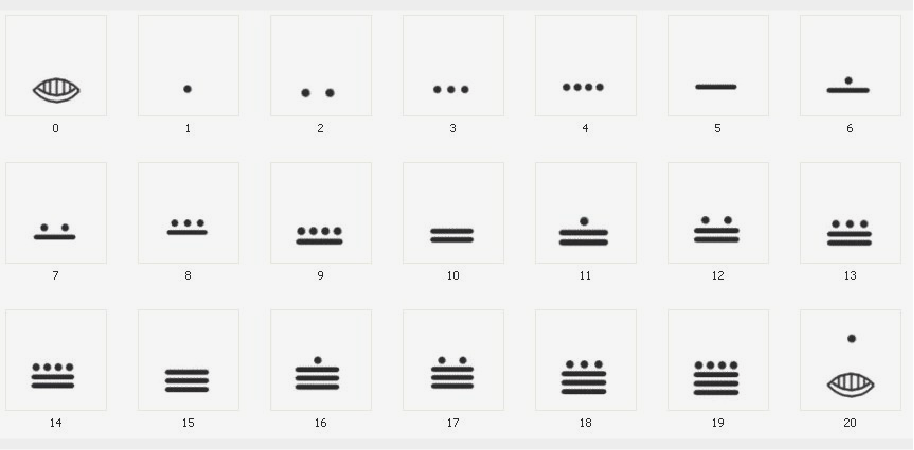For those of us raised in the scientific traditions of Europe, mathematics may seem to be the epitome of rationality, the intellectual opposite to religion and spirituality. Yet for many Mesoamerican groups, computation, arithmetic and accurate astronomical measurement were practiced as part of the religion because time itself was the omnipresent manifestation of the divine. To solve the mathematical problems that made time comprehensible within the Mayan cosmology was not only a pursuit of knowledge, but a pursuit of wisdom and cosmic truth.
The mathematics of the Mayan world can be classified by modern analysts as possessing both practical and religious elements, but it is important to remember that the two were inextricably linked in the world view of Mayan sages. Mayan innovations in what we would readily call "science" are numerous, the most notable of which are the number zero and their calendar. The existence of the zero, which first appeared in Europe (via India and the Islamic world) hundreds of years after its invention in the Yucatan Peninsula, where the Maya lived, allowed sophisticated results from mathematical procedures like multiplication, division, and square roots, unable to be performed in Europe un the zero was introduced in the twelfth century .
The Mayan calendar remains one of the most remarkable innovations of the ancient world. They defined the "vague year" as a 365.2420 day period (which was only .0002 days off of modern measurements). Yet this solar calendar was only half of the full calendar, which included a 260 day lunar calendar, a ritual almanac that conveyed the relationship of specific gods and goddesses to certain days. In fact, according to J.E.S. Thompson, each day was itself a living god and time itself was carried by the gods. An accurate calendar of the 260 day cycle thus became an obsession among Mayan cosmologists as it was necessary to correlate astronomical observations with the ritual calendar. To accomplish this, elaborate tables were created for the cycles of the moon and the synodical revolutions of Venus, like those seen in the Dresden Codex (Thompson 1974). Included among these tables were appendices to account for necessary corrections, and the sum result was an almost totally accurate temporal calendar.
Mathematics also permitted the measurement of time over the largest scale, both into the future and the past and, as the Maya had no definite beginning or end for time, they calculated far in both directions. Calendrically correct dates have been found on stellae for days that would have occurred over 400 million years ago and their astronomical tables were pushed well into the future, allowing the prediction of eclipses and other cosmic phenomena. The largest temporal cycle is a period of 374,440 years in which no date is repeated. The focus on such immense periods reflects just how central time and its measurement were to the classical Maya.
Entire cities were even arranged to coincide with astronomical cycles. Commercial and ritual centers like Teotihuacan in Central Mexico and Chichen Itza in the Yucatan peninsula were laid out to reflect the divine order of celestial motions, and several cities constructed observatories for better measuring these phenomena.
Although the Aztecs are less renowned for their mathematics than their Maya predecessors, they too used a sophisticated calendar that had its roots in more ancient Mesoamerican civilizations, most notably the Olmecs. With the European conquest of Mexico, however, Christian missionaries found it necessary to annihilate indigenous time systems in order to convert the natives to Christianity because calendars were central to the religion and rituals of the Aztec religion. As Christianity and Spanish rule became more entrenched, Mesoamerican societies were stripped of the institutions and professionals that produced and promulgated their mathematics and, despite being far less accurate, Christian time and counting replaced those of Mesoamerica.
Mayan mathematics is an example of "non-Western science" that contradicts Eurocentric ideas about what science is and who excels at its implementation. By wedding mathematics with religion and demonstrating excellence in its execution, the Maya blur lines between "center and periphery" in the history of science.
Questions for further exploration:
- How do religion and astronomy merge in the Dresden Codex? You will need to consult secondary sources to posit a convincing answer.
- Why would Christian missionaries spend so much effort interpreting Mesoamerican calendars, such as the interpretive wheel created by Diego Valades (in this topic's sources)? Was it to destroy culture, proselytize, preserve indigenous curiosities, or genuine scholarly interest? Make an argument based on contemporary context.
- Ethnomathematics and archaeoastronomy are umbrella terms classifying science in traditions other than that of the modern West. By differentiating between "our" science and "their" science, these terms question the universality of science. Using the Maya as an example, argue for or against mathematics as universal.
- Compare and contrast how the Maya used mathematics and astronomy with another Indigenous American civilization (Olmec, Aztec, Inca, Navajo, etc.). How did science contribute to the articulation and reinforcement of their worldviews?
Further reading:
Anderson, W. French. "Arithmetic in Maya Numerals." American Antiquity. 36: 1 (January 1971): 54-63.
Ascher, Marcia. "Before the Conquest." Mathematics Magazine. 65: 4 (October 1992): 211-218.
Aveni, Anthony F. Skywatchers of Ancient Mexico. Austin: University of Texas Press, 1980.
Hassig, Ross. Time, History, and Belief in Aztec and Colonial Mexico. Austin: University of Texas Press, 2001.
Leon-Portilla, Miguel. Time and Reality in the Thought of the Maya. Second ed. Norman: University of Oklahoma Press, 1988.
Malmstrom, Vincent H. Cycles of the Sun, Mysteries of the Moon: The Calendar in Mesoamerican Civilization. Austin: University of Texas Press, 1997.
Milbrath, Susan. Star Gods of the Maya: Astronomy, Folklore, and Calendars. Austin: University of Texas Press, 1999.
Paxton, Meredith. The Cosmos of the Yucatec Maya: Cycles and Steps from the Madrid Codex. Albuquerque: University of New Mexico Press, 2001.
Read, Kay Almere. Time and Sacrifice in the Aztec Cosmos. Bloomington: Indiana University Press, 1998.
Rice, Prudence M. Maya Calendar Origins: Monuments, Mythistory, and the Materialization of Time. Austin: University of Texas Press, 2007.
Thompson, Sir John Eric Sidney. "Maya Astronomy." Philosophical Transactions of the Royal Society of London, Series A, Mathematical and Physical Sciences. 276: 1257, The Place of Astronomy in the Ancient World (May 1974): 83-98.





